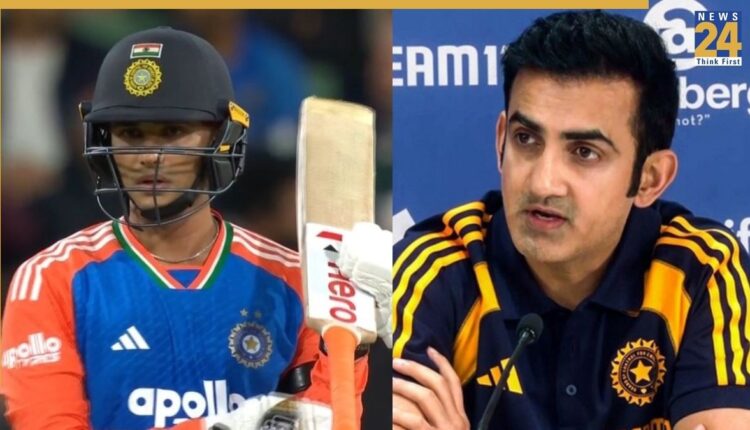IND vs AUS 2nd T20I: In the second T20 International between India national cricket team and Australia national cricket team, one of the few bright spots in a troubling batting performance was Abhishek Sharma’s blistering 68 off 37 balls – yet the larger picture for India remains worryingly flat. India were dismissed for 125 in 18.4 overs, and aside from Sharma’s heroics, the rest of the batting line-up mustered a mere 57 runs combined.
FIFTY!
Abhishek Sharma has been at it from the word go.
He brings up a brilliant half-century off just 23 deliveries.
His 6th in T20Is 🔥🔥
Live – https://t.co/ereIn74bmc #TeamIndia #AUSvIND #2ndT20I pic.twitter.com/5lt8x71Tmr
— BCCI (@BCCI) October 31, 2025
Sharma ignites, but the rest flicker
Sharma looked every bit the game-changer in this match. His knock featured eight fours and two sixes, and it came at a strike rate of around 183. But critically, his valiant effort came with scant support: Harshit Rana was the only other batter to reach double figures, and when Sharma departed, the innings quickly unravelled.
What this shows is twofold – one, Sharma is growing into the kind of T20 lynchpin India envisages; and two, everything around him is still patchy. The rest of the top-order couldn’t build on his platform, and the middle-order collapsed under the pressure Australia built early.
Are we witnessing World Cup-winning form for India?
It’s tempting to say yes – after all, with a star opening act like Sharma, India seem to have found a catalyst. Many will ask: is this a harbinger of dominance at the forthcoming T20 World Cup 2026? The short answer: not yet.
For a tournament like the 2026 ICC Men’s T20 World Cup, you need more than one batter firing. You need depth, you need resilience, and you need a unit that can deliver consistently under pressure. India’s total of 125, despite the pitch being decent for batting, underlines that they haven’t got the all-round collective sorted yet.
So yes – the pieces are falling into place, especially with Sharma’s meteoric rise (he recently became world No. 1 in T20Is). But until the other batters and the bowling unit step up, claiming “we will conquer the T20 World Cup” remains premature.
What about head coach Gautam Gambhir’s tactics?
Despite the individual brilliance, there are worrying signs about team preparation and strategy. India’s approach appears fragmented:
- The batting collapse suggests that the plans in the middle overs aren’t being executed — either shot selection, rotation of strike or partnerships are failing.
- The dependency on one player (Sharma) is a red flag. World-class sides ensure the “one batter fire” scenario doesn’t bring down the whole innings.
- And from a coaching perspective, Gambhir must reflect on how the team is built and how flexible or rigid the tactics are when opposition bowlers (in this case Australia’s pace attack) find rhythm early.
Simply put: Gambhir’s credentials as head coach are strong, but the visible cracks in the structure cannot be ignored. If India are to challenge for the title in 2026, the supporting cast needs to lift their game, not just rely on fireworks from the opener.
Last word
So, yes, there is hope. Sharma’s 68 stands out as a statement of intent. But hope is not a ticket to a world-cup conquest. For India to truly sound confident about the 2026 T20 World Cup, the rest of the lineup must back up Sharma, the bowling must consistently deliver, and Gambhir’s tactics must ensure the team functions as a cohesive unit. Until then, this performance is a warning sign and a flicker of promise but not a guarantee of glory.

